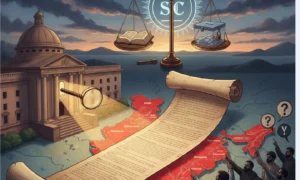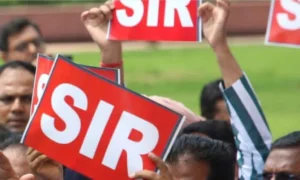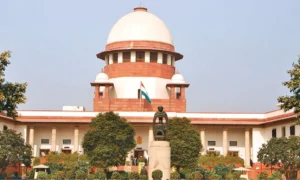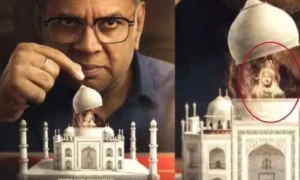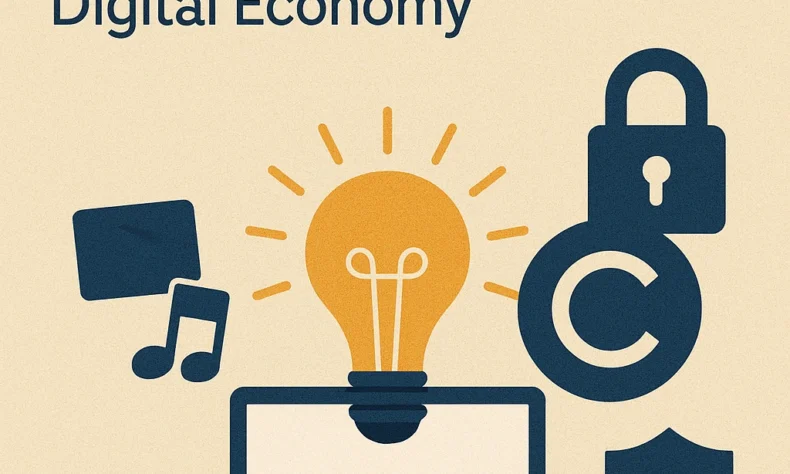
By Kavya
The 21st century has ushered in the digital economy, driven by a wave of innovation, creativity, and technology. Intellectual Property Rights (IPR) are the foundation of this knowledge-based economy, protecting inventors, creators, and entrepreneurs with proper recognition and protection for their efforts. The digital age has facilitated unparalleled global interconnectivity and innovation opportunities but also created intricate legal issues—everything from copyright piracy to guarding fashion designs, patent-related challenges for start-ups, and the growing acknowledgment of celebrity personality rights.
In India, the IPR system is largely governed by legislation like the Copyright Act, 1957, the Patents Act, 1970, the Trade Marks Act, 1999, and the Designs Act, 2000. The legislations, read in conjunction with international agreements like the TRIPS Agreement (1994) and the Berne Convention, try to balance the protection of innovation against accessibility. Yet, speedy technology advancements—cloud computing, blockchain, artificial intelligence (AI), social media platforms—have generated new challenges in implementing these rights efficiently.
This article critically analyzes major issues pertaining to IPR in the digital economy, specifically copyright piracy, protection of fashion designs, patent problems for startups, and personality rights of celebrities, analyzing judicial interpretations and proposing reforms.
Intellectual Property in the Digital Economy
Intellectual property refers to creations of the human mind, including inventions, literary and artistic works, symbols, designs, and trade names. The digital economy-e-commerce and all forms of digital platforms and innovation-action heavily relies on intellectual property. The protection of intellectual property, according to WIPO, drives economic growth, fosters creativity, and assures fair competition.
On the other hand, the digital ecosystem makes enforcement hard. However, challenges like unauthorized copying, online piracy, jurisdictional issues in cyberspace, and a general lack of awareness among small businesses have really put a strain on the current intellectual property rights (IPR) framework.
Copyright Piracy in the Digital Age
Copyright piracy is the act of reproducing and distributing copyrighted works like movies, music, software, and e-books, without obtaining the owner’s permission. The advent of peer-to-peer networks and increasing torrent websites and streaming platforms have made piracy commonplace, costing industries millions in damages.
Take, for example, India, which is fast becoming one of the leading countries in the world for the consumption of pirated content. The pirated content includes Bollywood and regional film industries that have suffered irreparable damage. Software piracy also remains a great worry for the IT sector, stalling its growth.
Legal Framework in India
- Copyright Act, 1957: Safeguard literary, musical, artistic, and cinematographic creations.
- Section 14: lays out the exclusive rights that copyright holders enjoy.
- Section 51: considers any unauthorized reproduction or distribution as an infringement.
- Information Technology Act, 2000: includes provisions to tackle digital copyright infringements.
Judicial Developments
- Super Cassettes Industries v. Myspace Inc. (2017): The Delhi High Court has ruled that online intermediaries can’t just rely on the “safe harbour” provision for protection if they’re actively helping with copyright infringement.
- UTV Software Communication Ltd. v. 1337x.to (2019): The Delhi High Court has taken a significant step by issuing India’s very first “dynamic injunction” aimed at tackling rogue websites involved in piracy. This new ruling gives courts the power to block not just the original sites, but also their mirror versions.
Challenges
- Jurisdictional barriers in regulating foreign-based websites.
- Streaming platforms vs. piracy websites: Piracy is often free, undermining subscription models.
- Weak enforcement: Even though the courts have made some strong statements, actually cracking down on piracy in practice is still pretty limited.
Way Forward
- To tackle the issue of piracy, we need to implement stricter measures to block those pesky pirate sites.
- We can also leverage cutting-edge technology like digital watermarking and blockchain to keep track of copyrights.
- Plus, let’s not forget the importance of awareness campaigns that encourage people to consume digital content legally.
Fashion Design Protection
Fashion is a great design driver that also fuels the entire economy. Fast fashions and ecommerce sites replicate designs and therefore treat designs with a lot of piracy. Digital platforms are open to give opportunities for counterfeiters to mass-produce and have their products sold globally at a small cost but at huge production.
Indian Legal Framework
- Designs Act, 2000: Enacted for the protection of new and original industrial designs applied to articles.
- Copyright Act, 1957: This act shall protect the work of drawings and art creations until it has been applied to more than 50 articles (Section 15).
- Trade Marks Act, 1999: allows fashion houses to trademark their logos or trade dress.
Judicial Precedents
- Microfibres Inc. v. Girdhar & Co. (2006): Delhi High Court explained that copyright protection ends if a design is reproduced over 50 times, and the Designs Act governs.
- Christian Louboutin SAS v. Nakul Bajaj (2018): Delhi High Court held luxury fashion trademarks (red sole shoes) valid and that online intermediaries were also liable for sale of fake products.
Challenges in Fashion IPR
- The ever-changing world of fashion trends makes it really challenging to have lengthy registration processes.
- There’s a lot of imitation going on in e-commerce, and keeping it under control is no easy feat.
- Many Indian designers still need to fully grasp how to safeguard their intellectual property.
Reforms Needed
- It is about to be launched fast-track registration system exclusively for fashion designs.
- Before e-commerce portals anti-counterfeiting measures will be strengthened.
- Advocating geographical indications (GI) for traditional Indian textiles and handlooms like Banarasi silk etc.
Startup Patent Issues
Patents grant exclusive rights in respect of inventions, thereby encouraging innovation and allowing start-ups to compete. Particularly in the digital economy, software, AI, fintech, health tech, and clean energy start-ups are dependent on patents for their very survival. Yet, this system is often not very friendly to early-stage innovators in India.
Patent Law in India
- Patents Act, 1970: Grants patents for inventions that are new, not obvious, and industrially useful.
- Section 3(k) bars computer programs “per se” from being patented, leaving software start-ups in limbo.
Challenges Faced by Startups
- The high cost of filing and maintaining patents can be a real hurdle for startups, especially since they often don’t have the financial backing.
- The examination process can drag on for years, with patent approval sometimes taking anywhere from 3 to 5 years.
- Patent trolls are a significant concern; these entities buy up patents and then target startups with lawsuits.
- When startups try to expand internationally, they often run into challenges with enforcing their patents abroad.
Judicial Developments
- Ferid Allani v. Union of India (2019): Delhi High Court made it clear that real technical advancements by computer programs were patentable, opening doors for software-related patents.
- Bayer Corporation v. Union of India (2014): Established the idea of compulsory licensing, reconciling patent rights with the public interest.
Government Initiatives
- Startup India Initiative (2016): Offers an 80% discount on the fee for filing a patent.
- Fast Track Examination for Startups under Patent Rules, 2016.
Way Forward
- More definitive guidelines for software patents.
- Low-cost patent advisory services for start-ups.
- Incentives for patent pooling and licensing schemes to avert litigation.
Celebrity Personality Rights
Celebrity personality rights otherwise known as rights of publicity have gained a lot of attention recently with the advent of social media and digital advertising. Such rights enable actors, stars, and celebrities to ensure that their name, image, voice, signature, or persona is not commercially exploited without authorization. The misuse of celebrity images through memes, deepfakes, and endorsements without their consent has become rampant in the digital economy.
Legal Recognition in India
There is no separate act; however, courts in India have recognized publicity rights by reading publicity rights into Article 21 (Right to Privacy) and the Trade Marks Act of 1999.
Judicial Precedents
• ICC Development v. Arvee Enterprises (2003): In this case, the Delhi High Court acknowledged publicity rights and concluded that unauthorized use of the celebrity’s image would infringe her economic rights.
• Shivaji Rao Gaikwad v. Varsha Productions (2015): the Madras High Court gave recognition to the personality rights of superstar Rajinikanth and thus stopped unauthorized use of his name and style.
• Anil Kapoor v. Simply Life India & Ors. (2023): The Delhi High Court gave an initial order of protection in favor of Anil Kapoor, stating that unauthorized use of his personality (voice, dialogues, images) will not be tolerated as it impinges on his rights.
Challenges in Digital Economy
- There is no specific statute on personality rights.
- Regulating deepfakes and AI-generated celebrity content becomes tricky.
- The conflicting situations between publicity rights and Article 19(1)(a) freedom of expression pose a challenge.
Suggested Changes
- Formulation of the umbrella law on personality rights.
- Tighter regulation on deepfake technologies.
- Mandatory disclosure norms in influencer advertising to prevent any misuse.
Conclusion
The digital economy lives on brand value, innovation, and creativity, so more ever than before, IPR protection is the need of the hour. Despite this, issues like fashion design copying, copyright piracy, patent barriers to start-ups, and abuse of celebrity personality rights reflect how much such strong reforms are required.
Indian legislation has developed through judicial interpretation and legislative changes, but enforcement loopholes persist in digital adaptation and awareness.
In today’s digital age, protecting intellectual property requires a well-rounded strategy:
- Enforcement of legislative regimes to overcome new technological realities.
- Use of technology (artificial intelligence, blockchain, watermarking) to trace infringement.
- Proactive judicial intervention to strike a balance between individual rights and the public interest.
- Cross-border international cooperation to meet cross-border digital piracy and patent enforcement challenges.
Finally, protection of IPR in the virtual economy is not only a matter of law but also a condition for long-term innovation, economic development, and cultural heritage in today’s world.
—Kavya is a student of Chanderprabhu Jain College of Higher Studies and School of Law, New Delhi
📰 Crime Today News is proudly sponsored by DRYFRUIT & CO – A Brand by eFabby Global LLC
Design & Developed by Yes Mom Hosting


